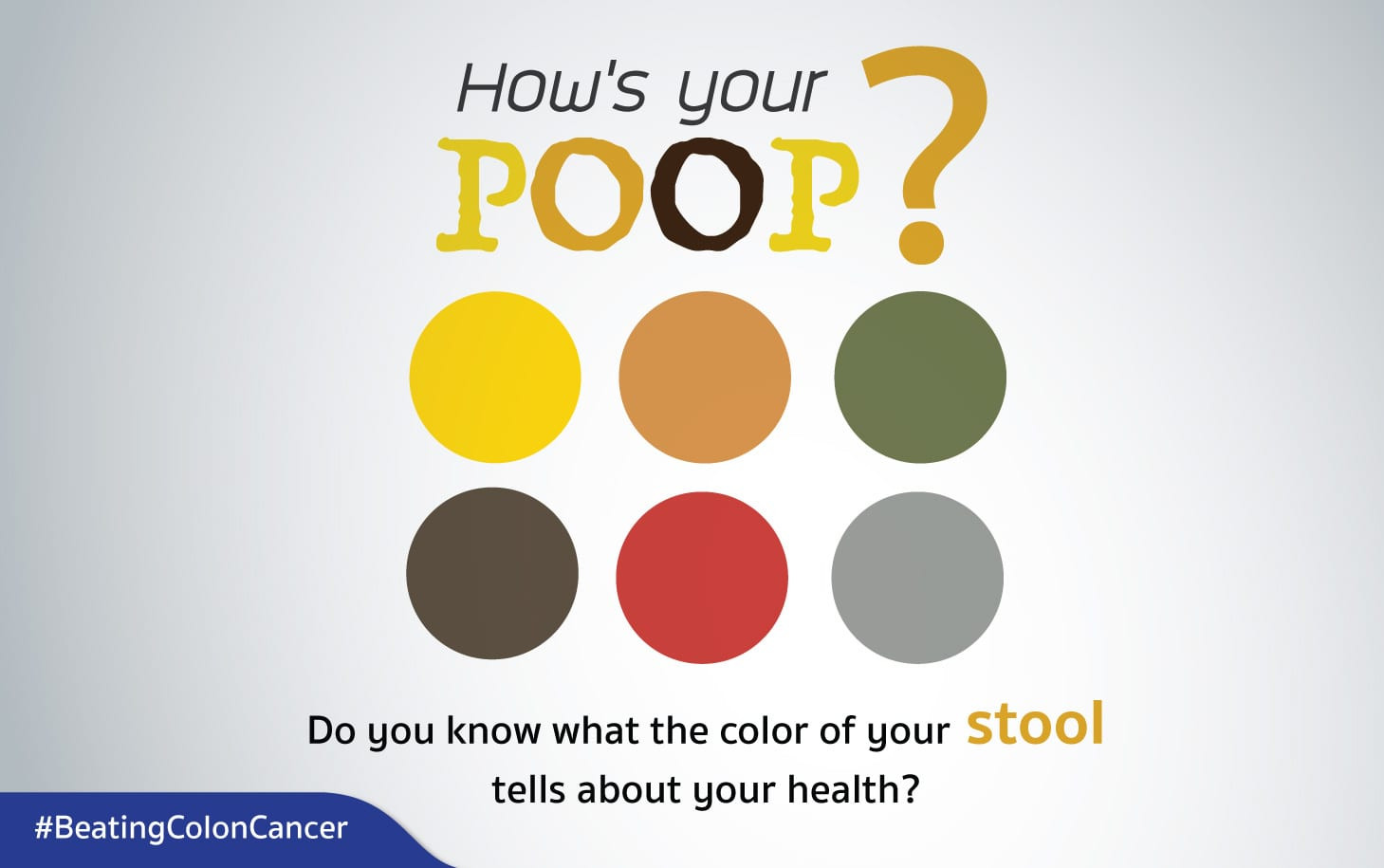Brown and yellow coloration
Brown and yellow coloration is a sign of a healthy stool, meaning that the digestive system is functioning normally. Light brown feces shows that the liver bile is digesting our food well. If the stools are faint yellow colored, greasy and distinctly pungent in aroma, it could be a result of excess fats present in the feces. This could signify that there are problems with the liver bile. Alternatively, it could mean there are abnormalities affecting the digestive system or nutrient absorption issues within the colon. Therefore, if you excrete pale and oily stool for several consecutive days, make a doctor’s appointment to undergo diagnosis.

Green coloration
Green coloration could be down to overconsumption of green vegetables. However, if the stools are also runny, this could be due to the onset of diarrhea or some forms of medication.
Black coloration
Black coloration may be a warning that there is bleeding in the upper digestive system, especially if the stools are tar-like in color. In such cases, immediately seek medical attention for a digestive system screening. If one excretes dark black stools regularly and doesn’t get treated, it could eventually result in the onset of colon cancer. Nonetheless, some cases of dark black feces may be caused by diet or some types of medication. For instance, eating liver, congealed blood, black sticky rice or mulberries could all lead to dark stool color. Conversely, it may be because of taking nutritional supplements containing iron or some drugs used to treat diarrhea.
Red coloration
Red coloration is usually a result of our diet, such as eating beetroot, roselle, papaya, watermelon, or consuming large amounts of red beverages. However, if there is blood in stools, hemorrhoids tend to be the main cause. It may also be a sign that there is bleeding in the lower digestive system, or could be inflammation in the colon walls or even a tumor.
Gray coloration
Gray coloration, particularly dark gray coloration, can occur when there is bleeding in the upper digestive system. Otherwise, it could also be a result of iron-based supplements, as in the case of dark black stools. If feces take on an ash gray color, it may be a warning sign for disorders related to the liver or pancreas. Furthermore, light gray, almost white stools may signify any of the following conditions: an obstruction in the gallbladder resulting in a bile deficiency, issues associated with the pancreas or side effects caused by the over consumption of some drugs.




